
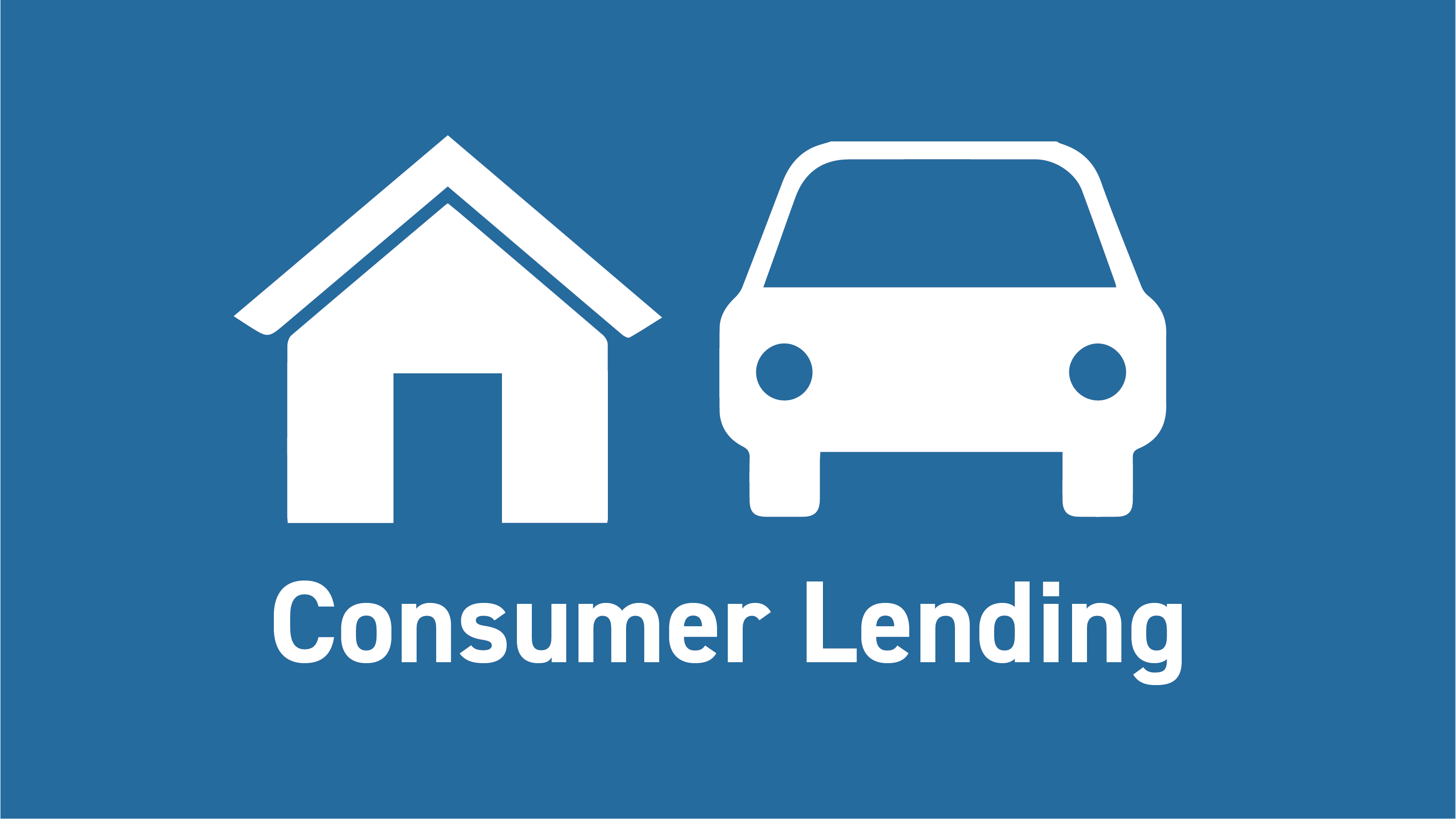
FinCEN Issues Final Rule Implementing Beneficial Ownership Information Reporting Requirements
On January 1, 2021, the Corporate Transparency Act (CTA) was enacted as part of the National Defense Authorization Act of 2021. The CTA applies to all corporations, limited liability companies, state partnerships, or other similar entities that are either created through a U.S. state filing or formed under the law of a foreign country and registered to do business in the U.S. The CTA requires that the Financial Crimes Enforcement Network (“FinCEN”) create and maintain a national registry of beneficial ownership information, which includes promulgating regulations mandating “reporting companies” to disclose the name, date of birth, residential or business address, and an identifying number for all reporting company “beneficial owners.” The goal of the CTA is to crack down on illicit finance and enhance the transparency of the U.S. financial system by preventing criminal actors from using anonymous shell companies to hide their illicit proceeds.1
FinCEN Issues Final Beneficial Ownership Information Reporting Rule
On September 29, 2022, FinCEN issued its final rule establishing beneficial ownership information reporting requirements.2 This article discusses key components of the final rule issued by FinCEN, including 1) who must file a report, 2) when a report is due, and 3) what information must be provided in the report. This rule becomes effective on January 1, 2024.
What is a reporting company and what entities are exempt?
An entity determined to be a reporting company (either a “domestic reporting company” or a “foreign reporting company”) must file a beneficial ownership information (“BOI”) report with FinCEN.
A domestic reporting company is defined as any entity that is a corporation, a limited liability company, or is created by the filing of a document with a Secretary of State or similar office under the law of a state or Indian tribe.3
A foreign reporting company is defined as any entity that is a corporation, a limited liability company, or other entity formed under the law of a foreign country and registered to do business in any state or tribal jurisdiction by the filing of a document with a Secretary of State or similar office under the law of a state or Indian tribe.4
There are 23 exemptions to the reporting rule, which include banks, credit unions, and depository holding companies as well as “entities that file reports with the SEC, governmental authorities, . . . money services businesses, investment advisors, securities brokers and dealers, tax-exempt entities, entities assisting tax-exempt entities, insurance companies, state-licensed insurance producers, pooled investment vehicles, public utilities, inactive entities, subsidiaries of certain exempt entities, accounting firms, and large operating companies.”5
When must the initial BOI reports be filed with FinCEN?
Unless a reporting exemption applies, reporting companies created or registered before January 1, 2024, will have one year (until January 1, 2025) to file their initial reports. Reporting companies created or registered after January 1, 2024, will have 30 days after creation or registration to file their initial reports. Once the initial report has been filed, both existing and new reporting companies will have to file updates within 30 days of a change in their beneficial ownership information.6
What information is required to be set forth in the BOI report?
Information must be provided about the reporting company, its beneficial owners, and its company applicants.
Information about the reporting company:
- its full legal name,
- any trade or “doing business as” names,
- a complete current address consisting of: (i) in the case of a reporting company with a principal place of business in the United States, the street address of the principal place of business, and (ii) in all other cases, the street address of the primary location in the United States where the reporting company conducts business,
- the state, tribal or foreign jurisdiction of formation,
- for a foreign reporting company, the state or tribal jurisdiction where the company first registers
- the IRS Taxpayer Identification Number (TIN) (including an Employer Identification Number) or where a foreign reporting company has not been issued a TIN, a tax identification number issued by a foreign jurisdiction and the name of that jurisdiction.7
Information about the individuals who are the company’s beneficial owners and applicants:
- full legal name,
- date of birth,
- complete current address consisting of: (i) in the case of a company applicant who forms or registers an entity in the course of the company applicant’s business, the street address of the business, or (ii) in any other case, the individual’s residential street address,
- unique identifying number and the issuing jurisdiction from one of the following documents: (i) a non-expired passport issued to the individual by the United States government, (ii) a non-expired identification document issued to the individual by a State, local government, or Indian tribe for the purpose of identifying the individual, (iii) a non-expired driver’s license issued to the individual by a State, or (iv) a non-expired passport issued by a foreign government to the individual, if the individual does not possess any of the other documents described, and
- an image of the document from which the unique identifying number was obtained.8
Who is a “beneficial owner?”
A beneficial owner is defined as “any individual who, directly or indirectly, either exercises substantial control over the reporting company or owns or controls at least 25 percent of the ownership interests of the reporting company.”9
An individual exercises substantial control over a reporting company if the individual (1) serves as a senior officer, (2) has authority over the appointment or removal of senior officers or a majority of the board of directors or similar body, (3) directs, determines, or has substantial influence over important decisions made by the reporting company, including among others, (i) the nature, scope, and attributes of its business including the sale, lease, mortgage, or other transfer of any principal assets, (ii) a reorganization, dissolution, or merger, (iii) major expenditures or investments, issuances of any equity, incurrence of any significant debt, or approval of the operating budget, (iv) the selection or termination of business lines or ventures, (v) compensation schemes and incentive programs for senior officers, (vi) the entry into or termination, or the fulfillment or non-fulfillment, of significant contracts, or (vii) amendments of any substantial governance documents, or (4) has any other form of substantial control over the reporting company.10
The rule exempts the following from the definition of a beneficial owner: (1) a minor child, (2) a nominee, intermediary, custodian, or agent of another individual, (3) an employee acting solely as an employee, (4) an individual whose only interest in a reporting company is a future interest through a right of inheritance, and (5) a creditor of the reporting company.11
What is a “company applicant?”
The “company applicant” is either 1) the individual who directly files the document that creates the entity, or in the case of a foreign reporting company, the document that first registers the entity to do business within the U.S., or 2) the individual who is primarily responsible for directing or controlling the filing of the relevant document by another. FinCEN modified this rule to limit the definition of “company applicant” to only one or two individuals.12
Future Rulemaking
FinCEN’s final rule regarding beneficial ownership information reporting is just one of three rulemakings planned to implement the CTA. FinCEN will promulgate additional rules to establish who and for what purposes beneficial ownership information may be accessed. Additionally, within one year after the effective date of the BOI reporting rule, the CTA requires the rescission of the beneficial ownership identification and verification requirements under the Customer Due Diligence (CDD) Rule and the revision of the CDD Rule to: 1) bring the CDD Rule into conformity with the Anti-Money Laundering Act of 2020; 2) account for financial institutions’ access to BOI reported to FinCEN for confirmation of beneficial ownership information provided by legal entity customers to the financial institutions; and 3) to reduce unnecessary or duplicative burdens on financial institutions and legal entity customers.13 Until the revised CDD Rule is in place, covered financial institutions are required to continue to comply with the existing CDD Rule.
While the need to provide BOI could create some challenges and headaches for business entities, the revision and rescission of certain portions of the CDD Rule could help streamline the banking and financial process for financial institutions and its customers. For a review of the key elements of FinCEN’s beneficial ownership information reporting rule click here. To view FinCEN’s final rule in its entirety, please click here.
1 https://legal.thomsonreuters.com/en/insights/articles/how-will-the-corporate-transparency-act-affect-aml-bsa-compliance
2 To view the FinCEN final rule in its entirety please visit this link.
3 https://www.federalregister.gov/d/2022-21020/p-473
4 https://www.federalregister.gov/d/2022-21020/p-487
5 See https://www.federalregister.gov/d/2022-21020/p-493 and https://www.federalregister.gov/d/2022-21020/p-541 (stating that “the exemption for a ‘large operating company” is available to any entity that (1) “employs more than 20 employees on a full-time basis in the United States”; (2) “filed in the previous year federal income tax returns in the United States demonstrating more than $5,000,000 in gross receipts or sales in the aggregate,” including the receipts or sales of other entities owned by the entity and through which the entity operates; and (3) “has an operating presence at a physical office within the United States.”).
6 https://www.fincen.gov/news/news-releases/fincen-issues-final-rule-beneficial-ownership-reporting-support-law-enforcement
7 https://www.federalregister.gov/d/2022-21020/p-240
8 https://www.federalregister.gov/d/2022-21020/p-263
9 https://www.federalregister.gov/d/2022-21020/p-350
10 https://www.federalregister.gov/d/2022-21020/p-1324
11 https://www.federalregister.gov/d/2022-21020/p-435
12 https://www.federalregister.gov/d/2022-21020/p-468
13 https://www.federalregister.gov/d/2022-21020/p-623
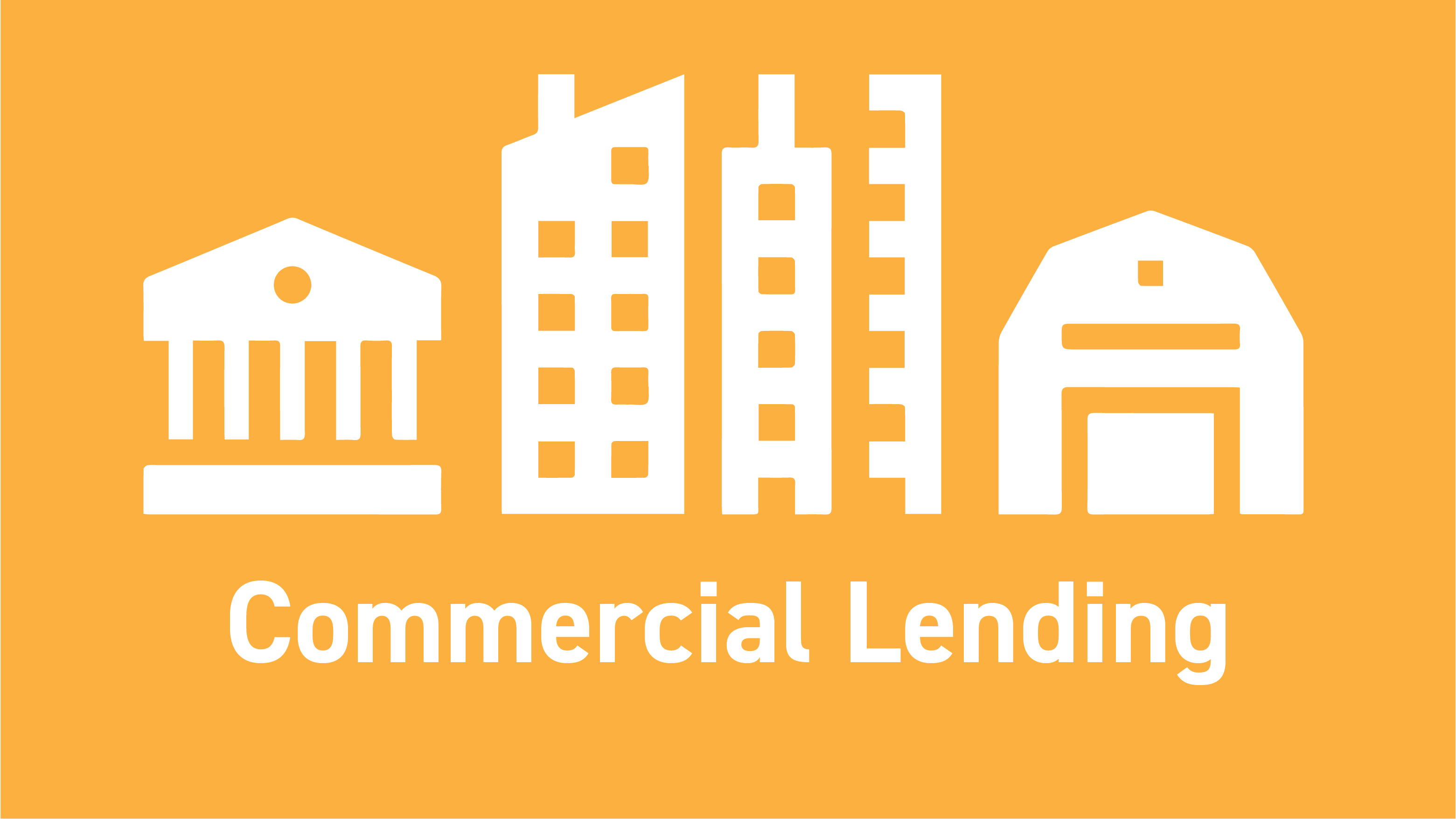
SBA Regulatory Reform Updates
The U.S. Small Business Administration (SBA) adopted final rules and proposed additional amendments to the regulations governing the SBA’s 7(a) and 504 Loan Programs. The driving intent is to reduce the regulatory burden while modernizing the loan program process. Ultimately, the hope is that these rules and amendments will help increase access to capital for small businesses and support economic recovery.
The proposed rule changes include use of proceeds for partial changes of ownership, lending criteria, loan conditions, reconsiderations, and affiliation standards.1 Additionally, new proposed rules will create Mission-Based SBLCs and remove the Loan Authorization.2 The final rules remove or revise regulations that are obsolete and unnecessary for SBA loans.3
Proposed Rules:
Restrictions on Uses of Proceeds and Loans for Changes in Ownership
Currently, the SBA has restrictions on using loan proceeds to purchase a portion of a business or another owner’s interest. The SBA’s proposed regulations will allow for the use of 7(a) loan proceeds to fund partial changes in ownership in addition to full changes. The proposal will rectify the gap in financing for those businesses and borrowers that wish to make a partial change in ownership. The proposal will allow for partial buyouts to provide a path of ownership for employees. Partial ownership changes will also promote new partners or owners for expansions, family to family transfers, and continuity for businesses and employees. 4
Lending Criteria
The SBA has proposed a revision to the requirements of credit worthiness and soundness of repayment. Three specific criteria may be considered: (1) the credit score or credit history of the applicant (and Operating Company, if applicable), any Associates and guarantors; (2) the earnings or cash flow of the applicant; or (3) any equity of collateral of the applicant, where applicable.5 These factors may be necessary to determine the credit worthiness and assess repayment assurance for a small business. Additionally, the SBA is proposing to remove the requirements to consider character and reputation from the first of nine factors.6 To offer clarity in terms of character and undefinable reputation, the credit history provides stronger context in terms of underwriting and credit review.
The SBA proposal will incorporate a new requirement that Lenders and Certified Development Companies (CDCs) must use appropriate and prudent generally accepted commercial credit analysis processes consistent with those used for their similarly sized, non-SBA guaranteed commercial loans. The SBA believes that an alignment between commercial credit analysis and underwriting processes of guaranteed and non-guaranteed loans will encourage more Lenders and CDCs to participate in the loan programs.
The proposed regulations permit Lenders, CDCs, and the SBA to use a business credit scoring model, with a choice between the SBA’s Small Business Scoring Service (SBSS) or other credit scoring models. When using other credit scoring models, Lenders and CDCs must document with an appropriate measure that their credit analysis is predictive of loan performance and be able to provide that evidence to the SBA upon request or during review.7 Although the SBA anticipates the use of credit scoring models in smaller loans, the decrease in cost of the smaller loans from use of the models will result in more Lenders and CDCs willing to lend in those instances. An important caveat is that the use of credit scoring models will not replace the compliance with other Loan Program Requirements.
The modernized lending criteria may result in leveraging existing data methods and expansion of credit assessment on applicants with little to no credit history. The SBA points to a U.S. Department of Treasury Report stating that the “use of data and modeling techniques for underwriting is an innovation.”8
Loan Conditions
In present regulation, the SBA requires hazard insurance on all collateral for 7(a) and 504 loans and does not differentiate this condition by loan size.9
To provide flexibility, the proposal will require hazard insurance on loans greater than $150,000. For loans of $150,000 or less, the lenders must follow the hazard insurance policies implemented for their similarly sized, non-SBA guaranteed commercial loans. The SBA recognized the sweeping hazard insurance requirement was burdensome for small loans without a distinction of loan size. The flood insurance requirements per § 120.170 remain.
Reconsiderations after Denial
Final reconsideration after denial of a loan application or modification is made by the Director, Office of Financial Assistance.10 This decision is final.
The proposed regulation adds that designees of the Director may make final decisions on reconsiderations. The proposal also provides the Administrator with authority, solely within the Administrator’s discretion, to review a reconsideration and make a final decision. The expansion of authority does not create additional appeal rights for an applicant.11 The SBA contends these changes will enable fair and prompt reconsiderations.
Affiliation Standards and Principles
The current regulation has seven applicable affiliation principles that are applied: (1) affiliation based on ownership; (2) affiliation under stock options, securities, and agreements to merge; (3) affiliation based on management; with all three including the principle of control of one entity over another; (4) affiliation based on indemnity of interest between close relatives; (5) affiliation based on franchise and license agreements, including the principle of control of one entity over another; (6) determination of the concern’s size; and (7) exceptions to affiliations.12
The SBA proposes to remove the principle of control of one entity over another as a separate basis for determining affiliation. The belief is that the control component is burdensome and unnecessary.
The proposed regulation also expands the definition of ownership to provide clarity. With other revisions concerning affiliations, the SBA is answering the public’s request for simplification.13 The SBA is endeavoring to modernize the loan process after success of affiliation streamlining under the temporary pandemic relief programs and Congressional actions.
Benefits and Costs
Overall, the SBA anticipates more benefits than costs for the proposed regulations. The examples for allowance of existing credit analysis processes and reduced hazard insurance requirements will save time and costs without jeopardizing review quality. New costs may be realized with an increase in the number of participating lenders and loan applications. More detailed breakdowns of estimated costs and savings are published in the Federal Register published proposal.14
Public Comment Period
Comments on the proposed rules must be received by the SBA on or before December 27, 2022. More information can be found at Regulations.gov. The full proposal can be found through the Federal Register.
SBLC Moratorium Rescission
A Small Business Lending Company (SBLC) is a non-depository lending institution authorized by the SBA to make loans under the requirements of 7(a) and Microloan programs. The SBLCs are regulated and supervised by the SBA. There are only 14 SBLCs since the moratorium in 1982.15
The published proposal will lift the moratorium on licensing SBLCs and create a new type of SBLC, Mission-Based SBLC. The Mission-Based SBLC “is a nonprofit organization whose purpose is to fill an identified capital market gap.”16 These SBLCs will make 7(a) loans and meet an individualized minimum acceptable percentage of loans for an identified capital market gap. The SBA asserts that these SBLCs will better meet the needs of underserved communities, increase access to capital in targeted gaps, and reduce the struggle to obtain non-predatory financing.17
Removal of Requirement for a Loan Authorization
7(a) and 504 Loans require a Loan Authorization stating the terms and conditions the SBA will guarantee loans under. The Authorization is signed and uploaded into the SBA’s electronic transmission (E-Tran) system. Additionally, the terms and conditions of each loan are submitted into E-Tran with the loan application.18
The SBA is proposing to remove the separate Loan Authorization and rely on the submitted terms and conditions with the loan application and SBA Form 750, which is the executed written agreement that all participating lenders will comply with SBA laws and regulations.19 The intention is to remove a process that is redundant and obsolete.
Benefits and Costs
With the authority to manage the safety and soundness of small business lending companies, the SBA is approved to charge a fee for oversight activities and examinations of SBA-supervised lenders.20 The initial safety and soundness examination is a minimum of $10,000 per applicant with a projection that a newly established SBLC will take up to five years to reach sustainable lending activity.21 The SBA did not provide quantitative data on removing the requirement for the Loan Authorization.
Public Comment Period
Comments on the proposed rules must be received by the SBA on or before January 6, 2023. More information can be found at Regulations.gov. The full proposal can be found through the Federal Register.
Final Rules:
Removal of LIBOR
The SBA has adopted the change to remove the London Interbank Offered Rate (LIBOR) as an optional base rate for variable rate 7(a) loans.22 The U.K. Financial Conduct Authority announced it would phase-out LIBOR with a sunset in 2023. The SBA final rule added clarification that if an alternative reference rate becomes widely accepted for small business commercial lending, the SBA will provide notice of that rate through the Federal Register.23
The final rule will provide certainty to Lenders and Borrowers in advance of LIBOR’s sunset. As a result, Lenders will only use the Prime or Optional Peg Rate as a base rate for any loan approved after the final rule’s effective date.24 The SBA recommends Lenders review their loan documents for a fallback rate or determine if modifications will be required. Only 3% of non-disaster business loans use LIBOR as a base rate and the SBA does not foresee a substantial economic impact.25
Fixed and Variable Interest Rate Changes
The SBA is updating the maximum allowed fixed interest rates for all 7(a) fixed rate loans. Effective August 1, 2022, the maximum allowable fixed interest rate will be the Prime rate in effect on the first business day of the month, plus: (i) 800 basis points for loans of $25,000 or less; (ii) 700 basis points for loans over $25,000 but not exceeding $50,000; (iii) 600 basis points for loans greater than $50,000, up to and including $250,000; or (iv) 500 basis points for loans over $250,000.26
For variable rate SBA 7(a) loans, the SBA will use loan amounts as the basis for which the variable interest rate is set, instead of loan maturities.27 The revisions are listed in § 120.214(d).28 The standardization of the maximum variable interest rate applies to all 7(a) loans. This implementation falls in line with the SBA’s ongoing effort to streamline the loan program regulations and reduce burden on the participants. The SBA also contends that allowing Lenders to charge higher rates on smaller loans, based on loan amounts, will induce Lenders to make smaller loans in reasonable terms.29
Removal or Revision of Confusing or Inaccurate Language
Several changes were adopted to remove or revise confusing information throughout the regulations. A section which had multiple changes approved was § 120.110. A revision in paragraph (h) to provide that a business is ineligible if it is “engaged in any activity that is illegal under Federal, State, or local law.”30 The agency intended to provide clear interpretation that illegal activity at any level of government jurisdiction in which the business is operating results in ineligibility.
The most commented on paragraph was § 120.110(k). The proposed removal of this paragraph providing ineligibility of a business that is “principally engaged in teaching, instructing, counseling or indoctrinating relation or religious beliefs…”31 was accepted. The SBA’s procedure has been to apply Supreme Court case law in a manner consistent with the First Amendment. The intent of the modification is to remove ambiguity.
Benefits and Costs
The SBA asserts the final rules are an effort to remove or revise regulations that were obsolete, unnecessary, ineffective, and burdensome.32 With clarity and less confusing information, Lenders and Borrowers will save time and effort in comprehension and inquiry. New, yet unavoidable, costs are likely to be incurred with the removal of LIBOR and the modification of loan documents.
Comment Results and Effective Date
Over 99% of the comments received were in response to the proposed removal of § 120.110(k).33 All but one of the received comments were in opposition of the removal. The SBA addressed these concerns with maintaining their standard operating procedure to require SBA Lenders complete SBA Form 1971, Religious Eligibility Worksheet, if loan proceeds may be used to fund religious activities.34
The final rules were effective as of August 1, 2022. The full publication of the final rules can be found through the Federal Register.
1 2022-23167.pdf (govinfo.gov)
2 2022-23597.pdf (govinfo.gov)
3 2022-13483.pdf (govinfo.gov)
4 2022-23167.pdf (govinfo.gov) p-64727
5 2022-23167.pdf (govinfo.gov) p-64726
6 2022-23167.pdf (govinfo.gov) p-64726
7 2022-23167.pdf (govinfo.gov) p-64725
8 Opportunities and Challenges in Online Marketplace Lending (treasury.gov) Pg 19
9 13 C.F.R. § 120.160(c)
10 13 C.F.R. § 120.193
11 2022-23167.pdf (govinfo.gov) p-64726
12 13 C.F.R. § 121.301(f)
13 2022-23167.pdf (govinfo.gov) p-64728
14 2022-23167.pdf (govinfo.gov)
15 2022-23597.pdf (govinfo.gov) p-66963
16 2022-23597.pdf (govinfo.gov) p-66964
17 2022-23597.pdf (govinfo.gov) p-66965
18 2022-23597.pdf (govinfo.gov) p-66964
19 2022-23597.pdf (govinfo.gov) p-66966
20 15 U.S.C.A. § 650, 15 U.S.C.A. § 634(b)(14)
21 2022-23597.pdf (govinfo.gov) p-66968
22 2022-13483.pdf (govinfo.gov) p-38902
23 13 C.F.R. § 120.214
24 2022-13483.pdf (govinfo.gov) p-38902
25 2022-13483.pdf (govinfo.gov) p-38908
26 2022-16162.pdf (govinfo.gov) p-46883
27 2022-13483.pdf (govinfo.gov) p-38902
28 13 C.F.R. 120.214(d)
29 2022-13483.pdf (govinfo.gov) p-38907
30 13 C.F.R. § 120.110
31 2022-13483.pdf (govinfo.gov) p-38906
32 2022-13483.pdf (govinfo.gov) p-38906
33 2022-13483.pdf (govinfo.gov) p-38900
34 2022-13483.pdf (govinfo.gov) p-38901
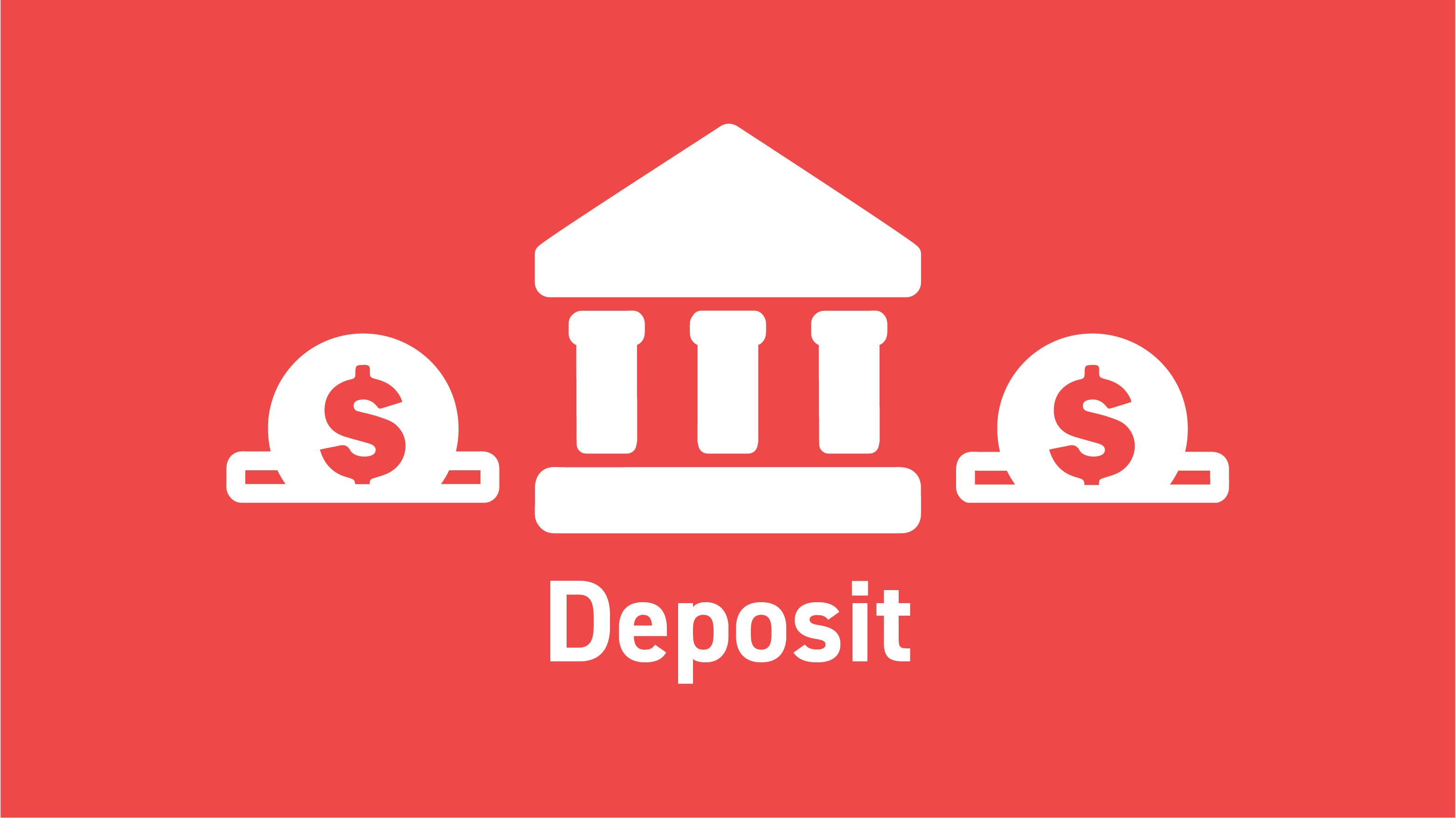
Effective Date for New W-4R Approaching
After a year of transition, the effective date to use the new W-4R is quickly approaching. Effective January 1, 2023, payors are to provide Form W-4R, or a qualifying substitute, to fulfill the withholding notice requirement for nonperiodic and eligible rollover distributions.
The new Form W-4R will be used to withhold federal income tax from eligible rollover distributions from employer retirement plans and nonperiodic payments from employer plans and IRAs. Unless an IRA is annuitized, IRA distributions are “payable on demand” and are considered nonperiodic distributions as IRA owners and beneficiaries can request distributions whenever they wish. Historically, nonperiodic distributions have been subject to 10 percent withholding unless a higher rate is elected, or the recipient waives federal income tax withholding and has nothing withheld. However, with the implementation of the new Form W-4R, nonperiodic distributions are subject to the default of 10 percent withholding unless the recipient waives federal withholding and has nothing withheld or elects a different rate (in whole numbers) between 1 percent and 100 percent. A request below 10 percent cannot be honored if payment is being delivered outside of the United States (or its possessions) or if a social security number is not provided. Recipients of Eligible Rollover Distributions from employer-sponsored qualified plans continue to be subject to 20 percent withholding unless a higher rate is elected.
In September, the IRS posted a draft 2023 Form W-4R, Withholding Certificate for Nonperiodic Payments and Eligible Rollover Distributions. While the publication date of the 2023 Form W-4R is not known, payors should prepare for compliance with the new form effective January 1, 2023, in the case the IRS released the 2023 Form W-4R on or before December 2, 2022. If the final version of the 2023 Form W-4R is posted after December 2, 2022, the 2022 Form W-4R may be used in 2023 up until the effective date for using the 2023 version of Form W-4R (i.e., 30 days following the release of the 2023 Form W-4R).
For the remainder of 2022, payors are compliant with withholding notice requirements if either the 2021 Form W-4P, Withholding Certificate for Pension or Annuity Payments (or, qualifying substitute), or the 2022 Form W-4R (or, qualifying substitute) is used to fulfill the withholding notice requirement.
The update to the new W-4R brings updates to the process of withholding in Compliance Systems' solution. Previously, an owner was able to decide whether they wanted to withhold a dollar amount, a percentage, or a combination. Under the new rules, a plan owner may only designate a whole percentage to be withheld. Also, the owner may now designate any whole number from 0 (also known as waiving withholding) and 100 where previously an amount under 10 was not permitted and error messages would render. The model form is being updated within the Compliance Systems solution to comply with the new rules and will be updated yearly to reflect the updates to the marginal tables.
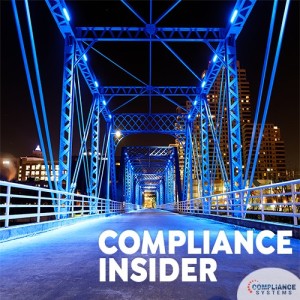
Episode 6: Crypto Custodians Explained
The Compliance Insider is the podcast series by Compliance Systems and CUNA Mutual Group’s Fintech Solutions that brings you discussions about industry developments that impact financial institutions, with expert guests and analysis to help navigate change and evolve your business. In our latest episode, Crypto Custodians, Explained, we take a closer look at crypto custodians and how their role is different from the role usually played by financial institutions, along with some considerations for banks and credit unions that may want to offer crypto custodian services. Please check out all of our episodes and subscribe for updates here.
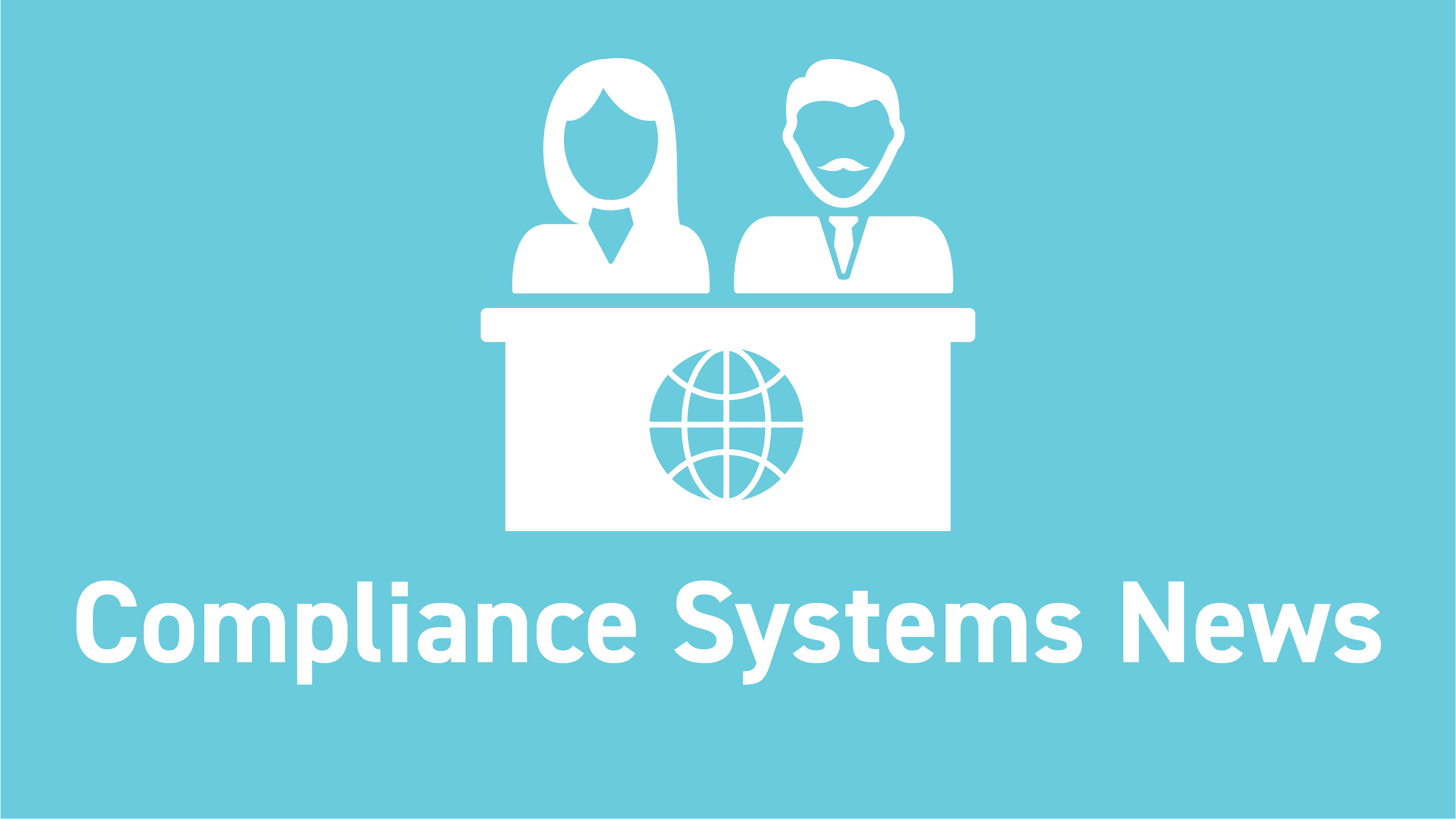
Compliance Systems News
Treasury Management Document Solution
Development of our new Simplicity Treasury Management solution is nearing completion. This new content supporting treasury management services will be a Master Services Agreement that includes terms for remote deposit capture, mobile deposit, online banking, ACH origination, controlled disbursements, positive pay, wire transfers, sweeps, EDI, account reconciliation, and lockbox services. Our pilot testing program is well underway and we are on track to release the product in the coming weeks.
If your institution would like to stay in the loop on this initiative, we encourage you to visit our Community Lounge and subscribe to the Treasury Management Product Updates forum, which is nested in the Product and Industry Updates space. If you have not registered for our Community Lounge, we are happy to help you get started with these instructions.
Recent Solution Updates
We continue to work on new and expanded product features to better serve your business needs. In the last quarter, we released changes to improve numerous documents, including the HELOC Disclosure and Agreement. We've also made the Initial Escrow Account Disclosure available for commercial loans, and made enhancements to the commercial loan modification process. Please refer to our Update Spotlights released throughout the year for more information on these updates.
Please subscribe to the Update Spotlights forum in our Community Lounge to receive alerts whenever we post spotlight release information.
If you have not registered for our Community Lounge, we are happy to help you get started with these instructions.
.png?width=6347&height=1866&name=Compliance%20Systems%20logo_transparent%20(002).png)

